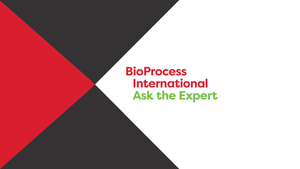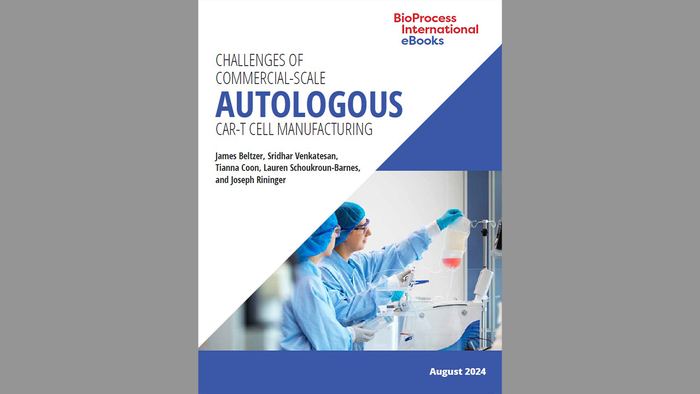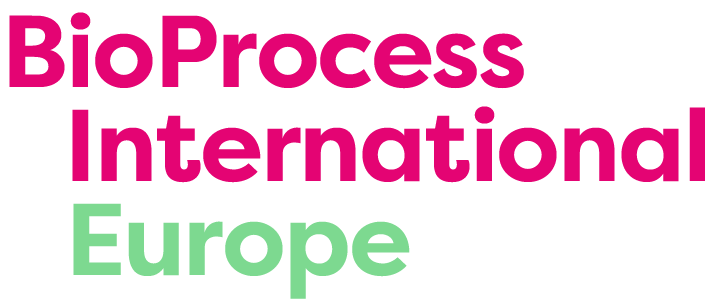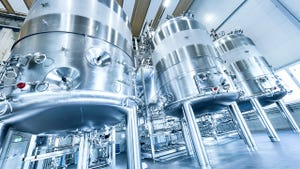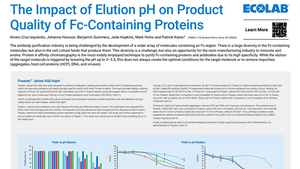Translating Transfusion-Medicine Technology to Cancer-Vaccine Manufacturing: A Novel Immunization Approach Based on Inactivated Autologous Tumor CellsTranslating Transfusion-Medicine Technology to Cancer-Vaccine Manufacturing: A Novel Immunization Approach Based on Inactivated Autologous Tumor Cells
Many technologies used in today’s biomanufacturing processes stem from innovations made for the blood-products industry. “Blood banks are where cell therapy started 90 years ago,” as I learned from Raymond P. Goodrich, cofounder of PhotonPharma as well as a professor in the Department of Microbiology, Immunology, and Pathology at Colorado State University (CSU) and former executive director of the school’s Infectious Disease Research Center (IDRC). He pointed out that Bernard Fantus established the first US blood bank in 1937 in Chicago, IL. A decade later came the American Association of Blood Banks, known today as the Association for the Advancement of Blood and Biotherapies (AABB). “The first cell therapies were red blood cells and platelets for transfusion,” products that scientists “learned how to process in an environment like a laboratory cleanroom. They developed an industry around that process to facilitate handling of blood products from collection to storage and administration — all in ways that could be performed outside of cleanrooms.” At that time, single-use transfusion technologies enabled aseptic processing in even nonsterile environments. Such developments have since become mainstay medical and biomanufacturing technologies.
Goodrich’s work represents another possibility for translating transfusion-medicine technologies to biopharmaceutical applications. In the late 1990s, he cofounded Navigant Biotechnologies, which sought to develop a process for inactivating pathogens in blood products (1). The team’s work resulted in the Mirasol Pathogen Reduction Technology (PRT) platform, which launched in November 2007. The company and platform were acquired by Caridian Blood and Cell Technologies, which Terumo Transfusion Technologies (now Terumo Blood and Cell Technologies) acquired in 2011. From then until 2016, Goodrich served as Terumo’s chief scientific officer (CSO) and vice president of scientific and clinical affairs.
“Over time,” he reflected, “I recognized that the platform could be highly applicable for vaccines. It uses riboflavin (vitamin B2) and ultraviolet (UV) light to disrupt nucleic-acid replication processes in pathogens and other cellular contaminants.” Many available inactivation methods — e.g., gamma irradiation — can disrupt such replication processes, but they also damage pathogen membranes and proteins. “If you’re trying to develop a product that induces immunological responses, as in vaccine applications, then you want the inactivated pathogens to look and act as much as possible like the original agents.” Inactivation by the Mirasol PRT platform does not disrupt cellular membranes or proteins, and for vaccines, it could hold an advantage over other inactivation methods.
For several reasons, Terumo ultimately focused applications of the Mirasol technology on blood products and transfusion medicine — areas, Goodrich observed, in which much work remains to be done to help both patients and healthcare providers. But after settling into his current position at CSU and speaking with colleagues at the school, he entered agreements with Terumo to pursue vaccine applications, specifically for cancer treatment. As of December 2024, he and the PhotonPharma team have received US Food and Drug Administration (FDA) clearance on an investigational new drug (IND) application to initiate a phase-1 clinical trial for their Innocell product, a therapeutic cancer vaccine based on live, replication-inactivated, autologous tumor cells.
Despite initial setbacks with generating significant immune responses, drug developers continue to pursue neoantigen-based therapeutic cancer vaccines. In an informative review of cancer-vaccine development, Fan et al. (2023) usefully describe the merits of the neoantigen approach as well as the steps involved in neoantigen identification, synthesis, and delivery (2).
The writers observe that neoantigen vaccines hold a key advantage over products based on antigens that are shared across patients’ tumors (tumor-associated antigens, TAAs). Because TAAs are expressed at low levels in normal tissue, antigen-specific T cells can succumb to central thymic tolerance, resulting in inadequate antitumor responses. Neoantigens are expressed only in a patient’s tumor cells and thus can bypass thymus-negative selection, leading to robust, neoantigen-specific T-cell responses. However, current research suggests that few neoantigens can induce the needed T-cell responses, making neoantigen prediction critical for clinical success.
That process can be time- and resource-intensive even though sequencing technologies and bioinformatics tools have improved considerably over the past few decades. As Fan et al. explain, scientists need to perform deep sequencing of a tumor sample — e.g., using whole-exome sequencing (WES), RNA sequencing (RNA-seq), and mass spectrometry (MS). Next comes in silico prediction of neoepitopes and major histocompatibility complex (MHC) binding. Such steps identify RNA, DNA, or peptide sequences that subsequently are synthesized and formulated. After a vaccine is given to a patient, scientists must perform immune-response and clinical monitoring using methods such as an enzyme-linked immunosorbent spot (ELISpot) assay, tetramer staining, or intracellular cytokine staining (ICS) as well as tumor marking or analysis of circulating tumor DNA (ctDNA).
Traditional Approaches and Emerging Opportunities
How would you describe the landscape for cancer vaccination? What approaches have been possible? For a long time, the term cancer vaccine was frowned upon in the biopharmaceutical industry. Companies had developed multiple approaches that, for one reason or another, failed to be efficacious.
One approach involves isolating antigens from a tumor sample (neoantigens) and then presenting those proteins back to a patient’s immune system (see “Neoantigen Cancer Vaccines” box) (2). Such work began when researchers, frankly, had a much more limited understanding of immunology than what we have today. Scientists initially did not account for chemical markers and signaling agents that tumor cells excrete to suppress immune responses.
As we have learned about immune checkpoints and ligands, we also have begun to understand how tumors evade treatment — e.g., by disrupting immune signaling and generating clones that lack the markers used in therapeutics and vaccines. Now that drug developers have learned to use immune-checkpoint inhibitors (ICIs) to shut down tumor-cell immune suppression, and now that such treatments have been used in combination with other modalities, therapeutic cancer vaccines are coming back into favor. Their resurgence also derives from interest in messenger RNA (mRNA), which can encode for tumor-associated antigens. Generating immune responses to such antigens outside of a tumor microenvironment should help to shut down immune evasion. Developers such as BioNTech and Moderna have achieved remarkable results in phase-2 and even phase-3 clinical studies using such approaches (3, 4).
Another approach to cancer vaccination that has been around for a while involves manipulating cells outside a patient’s body. Dendreon’s Provenge (sipuleucel-T) product is an example. Dendritic cells (DCs) are isolated from patient blood and activated ex vivo through exposure to a shared cancer antigen (5). Then, activated cells are readministered to the patient’s body, where they present the antigen to the immune system and stimulate a response. The underlying principle is similar to that for chimeric antigen receptor (CAR) T cells: A drug manufacturer manipulates isolated T cells outside a patient’s body and teaches them (through genetic engineering and CAR expression) how to identify tumor cells. Then, those cells are put back into the patient’s body to do their jobs. The same goes for tumor-infiltrating lymphocyte (TIL) therapies, which in some cases have received regulatory fast-track designations (6). TIL approaches involve isolating T cells from a tumor, expanding those cells ex vivo, and administering them to the patient. The rationale is that the expanded TILs already will be triggered to attack tumor cells.
In essence, vaccines work through antigen presentation and immune stimulation. Cancer vaccines are coming back into favor as the industry continues to learn about immunology. Researchers are beginning to understand how tumors evade immune responses, and as a result, drug developers are learning how to leverage neoantigen profiles and combine available treatment approaches.
How did you come to consider UV light’s applications for cancer-cell inactivation? Did you have a seminal moment when you “connected all the dots” from your work at Navigant and Terumo? In 2017, I attended a “state of the science” meeting for the CSU scientific research community. There, I met my colleague Amanda Guth, a veterinarian and immunologist (now research director at Zoetis) who had been studying animal models of cancer prevention and treatment. I ran what I thought was a wild idea by her, asking whether cells could be extracted from a patient’s tumor, inactivated, combined with appropriate immune-stimulating agents, and then readministered to the patient. I wondered whether presenting inactivated tumor cells to a patient’s immune system outside the tumor microenvironment could stimulate an immune response that would lead to tumor clearance and prevention of metastatic disease.
Amanda thought that the idea was worthwhile, so in 2017, we started performing some simple mouse-model experiments. The results were encouraging, so we filed patents at CSU to cover our use of the inactivation technology in this application. In 2018, Amanda and I, along with Jon Weston, formed PhotonPharma. We licensed the inactivation-technique intellectual property from CSU for applications to animal and human cancer vaccines.
Our team has performed considerable development work since then, studying preclinical animal models and establishing processes that could support good manufacturing practice (GMP) production of our therapeutic cancer vaccines. Having received IND clearance in 2024, we expect to launch human studies in 2025.
Initially, we are studying patients with relapsed ovarian cancer. Unfortunately, that disease has a poor prognosis. More than half of patients who are diagnosed with ovarian cancer and treated with chemotherapy or radiation relapse within three to five years, and when they relapse, the disease tends to be much more aggressive than it was initially (7).
Current treatment options just repeat the cycle of surgery, chemotherapy, and radiation. With our Innocell vaccine, we want to add immunotherapy to help patients’ immune systems to recognize and destroy tumor cells before they can create new tumors and metastasize. So our vaccines are not replacements to traditional therapies, but rather adjuncts that prevent tumors from taking root and extending disease.
Leveraging UV Light and Riboflavin
What distinguishes PhotonPharma’s approach to therapeutic cancer vaccination from the other methods that you described? Our company proposes a twist on the vaccine-production process, one that we believe will have advantages in terms of applicability to multiple diseases. As I mentioned, therapies based on CAR-T, DC activation to neoantigens, and TILs all involve taking immune cells out of a patient’s body and “training” them (with exposure to antigens or addition of antigen receptors), expanding them, and so on. Our process involves taking a sample from a patient’s tumor (e.g., through biopsy), exposing the cells to UV light and riboflavin, adding adjuvants that stimulate immune responses, and finally readministering the material. So whereas conventional manufacturing processes do all of the cellular activation and expansion outside a patient’s body, our approach makes that work happen in vivo. By inactivating tumor cells with UV and riboflavin treatment, we essentially turn them into antigen-presenting cells (APCs).
We obtain a tumor sample through biopsy or surgical excision, then use a proprietary process to transform that material into a suspension by digesting the tissue enzymatically and mechanically. The suspension contains both tumor and matrix cells; we do not perform any selection or sorting because we suspect that the matrix cells present in the suspension are important to inducing an appropriate immunological response. Then, we inactivate the cells to eliminate their replication potential. For that, we apply the Mirasol PRT platform, including the same device, disposable containers, and riboflavin solution that are used for pathogen inactivation of blood products. Terumo BCT supplies materials through agreements that we have forged with the company.
Next, the cell suspension is placed in a container, formulated with riboflavin, and exposed to UV light within a Mirasol device using proprietary settings developed to inactivate tumor cells specifically. The platform records key parameters, including temperature, time, and light exposure. UV treatment takes less than five minutes. Then, the inactivated cells can be aliquoted and frozen until required for administration. So that workflow involves no downstream purification.
Processing occurs within a good manufacturing practice (GMP) facility with ISO-7 cleanroom capabilities. There, we perform required quality checks to ensure that final products are sterile, contain no endotoxins, and lack replicating cells. We also characterize what tumor antigens are present in a product and to what extent.
When a patient is ready, the inactivated-cell solution is thawed and combined with a commercially available adjuvant that we identified during preclinical studies as having good immune-stimulating properties. Finally, the patient receives an initial dose of the product through intradermal injection, with two biweekly boosters following.
Why does PhotonPharma leverage UV treatment rather than another inactivation technique? UV and riboflavin are both critical elements to what we do. When developing the process for pathogen elimination in blood products, the challenge was to inactivate pathogens (and thereby prevent disease transmission) while maintaining the integrity of membranes, proteins, and antigens associated with red blood cells, platelets, and plasma. The problem with other inactivation methods is their lack of selectivity.
It is easy to kill pathogens — for instance, with bleach — but doing so often destroys everything else in a product. In the 1990s, I started synthesizing molecules, including psoralen compounds, which are known to perform [2 + 2] cycloaddition in the presence of UV light (8). That process cross-links nucleic acids and thereby prevents their replication. However, psoralen compounds are mutagenic (8). Through indiscriminate cross-linking, they can alter cell surfaces, membranes, and proteins.
In the late 1990s, I came across riboflavin. Previous investigators had reported that the vitamin performs specific nucleic-acid–base chemistry when exposed to light (9). My team found that the molecule does not modify proteins and membranes covalently; rather, it works at the nucleic-acid level by oxidizing guanine bases primarily (10–12). So riboflavin disrupts the signal that is associated with nucleic-acid replication processes but does not create the kind of damage that comes with indiscriminate cross-linking. That said, riboflavin photochemistry modifies nucleic acids in ways that cannot be repaired easily. So it results in permanent damage that prevents cells and pathogens from replicating yet has no effect on their protein and membrane structures.
Inactivation by UV light and riboflavin works not only for blood, but also for tumor cells. In our Innocell vaccines, we want inactivated cancer cells to stay intact and remain functional, except for their replication capability. Let’s say that we want a vaccine to stimulate antibodies and T-cell recognition of a cluster of antigens on a cancer cell. We want inactivated cells to retain that structure. Applying gamma radiation, heat inactivation, or even UV by itself will kill the cancer cells and prevent them from replicating, but such processes also alter the membranes and proteins that antibodies and T cells need to recognize. Thus, a patient’s body might raise antibodies to features that are different from those of the cancer cells that they are supposed to target.
That has been a key problem with investigational cancer vaccines based on inactivated tumor cells. The selectivity of the Innocell process enables us to inactivate patient tumor cells without damaging their structural features. Comparing gamma-irradiated and Innocell-treated cells shows distinct patterns in the cells’ proteomics, metabolomics, and so on.
The process also seems to have the advantage of using whole cells rather than needing to sequence and synthesize clusters of neoantigens. That is correct. Many approaches to cancer vaccination can be life-saving, but they can be extremely expensive to produce and administer, mainly because they require that manufacturers take immune cells from a patient’s body for testing, pulsing, expansion, and so on. And for mRNA-based vaccines, drug developers need to identify the right neoantigen targets. Let’s say that we design such a vaccine to contain five or 10 neoantigens. A tumor cell might have 100 different antigens, with variants occurring across cells. That vaccine could let many tumor cells go undetected, and that subset of cells would generate clones that lack the vaccine antigens.
Our approach trains a patient’s immune system in vivo, letting that happen by natural processes. Innocell vaccines present patient immune systems with whole tumor cells that display all of their neoantigens, minimizing the chances that a subset of antigens escapes detection.
Increasing Treatment Availability and Affordability
How would you describe your operational and facility requirements? What scales could your process accommodate, and how close could it come to the point of care? We believe that our process will be much more logistically practical and affordable than other cancer-vaccine production methods are.
I’ve spent most of my career working in blood banking and transfusion-medicine technology, so I like to think about facility concerns in terms of blood banks. While working with red blood cells and platelets for transfusion applications, medical-device companies established ways to handle and manipulate blood products safely in biosafety-level 2 (BSL-2) cleanrooms and later in clean but nonsterile environments. Companies did that by developing disposables and equipment that provided for integrated, aseptic processes. If you enter a blood center today, you won’t find yourself in a class-100/ISO-5 cleanroom. You might find some people working in biosafety cabinets, but most operations now are performed on a laboratory benchtop because the relevant equipment includes sterile pathways and aseptic connections.
Our approach follows a similar historical pattern. Today, we need devices for tissue digestion, inactivation chemistry (e.g., the Mirasol PRT platform), concentration of inactivated cells, sample aliquoting, and vialing. Because the workflow involves transfers across different kinds of equipment, we currently cannot perform it all in a blood-center environment. Rather, it needs to happen in a controlled and centralized environment, such as an ISO-7 cleanroom in which you can work according to GMP. But it’s easy to imagine a future in which we combine some of those steps and processes using new disposables and equipment systems. Doing that could lead us to a point, as with the Mirasol device today, at which we can place the Innocell vaccine process in a blood bank or hospital’s transfusion-service laboratory. Creating new disposables and integrated equipment could distribute access to the process while enabling operators to perform it in a controlled, aseptic way. That ultimately could increase availability and affordability of treatment for cancer patients.
Broad distribution is a valuable goal. We have developed a process for personalized vaccines. We are not trying to manufacture thousands of lots to treat hundreds of thousands of patients. In our case, each lot is for one patient, so we are trying to offer our option for as many patients as are eligible to receive it and benefit from treatment. So being able to distribute the process is worth working toward. It will take a long time to get there. Such changes do not happen overnight. But I believe that the capability is there and that the process, as it functions now, can be “grown” in a centralized manufacturing environment.
What do you hope to learn as the Innocell product advances through clinical studies? In this first clinical study, we want to confirm that the monotherapy (inactivated cells combined with an adjuvant) is safe when it is administered, that we have some indication of immune responses, and that we can perform the process, logistically speaking. But I am excited about our continuing work in preclinical animal models, in which we are studying combination-therapy approaches. We are applying our vaccines alongside ICIs, such as vasoendothelial growth factor (VEGF) inhibitors. That includes bevacizumab, a commercially available antibody that prevents cancer-cell endothelization. It slows tumor progression, so it does not stop cancer from growing, but it buys a patient time. In animal models, we are finding that administration of bevacizumab with the Innocell product generates a synergistic, additive effect. That is exciting, and it opens up treatment possibilities. Once we have completed our initial monotherapy evaluation, we also can study combination-therapy approaches, which might provide stronger signals of immune activation and greater responses relative to extended survival and reduction of morbidity and mortality.
Another exciting development is our plan to expand the process into other tumor types. Originally, our work targeted breast cancer, and we performed many preclinical studies in that area. For several reasons, we entered clinical trials with ovarian cancer as a first indication. But we intend to return to breast-cancer indications and to begin studying colon and lung cancer. We believe that our technology can apply to many types of solid organ tumors, and we hope that Innocell products will provide physicians with another tool for their clinical toolboxes.
SIDEBAR
Neoantigen Cancer Vaccines: Balancing Efficacy and Manufacturing Complexity
Despite initial setbacks with generating significant immune responses, drug developers continue to pursue neoantigen-based therapeutic cancer vaccines. In an informative review of cancer-vaccine development, Fan et al. (2023) usefully describe the merits of the neoantigen approach as well as the steps involved in neoantigen identification, synthesis, and delivery (2).
The writers observe that neoantigen vaccines hold a key advantage over products based on antigens that are shared across patients’ tumors (tumor-associated antigens, TAAs). Because TAAs are expressed at low levels in normal tissue, antigen-specific T cells can succumb to central thymic tolerance, resulting in inadequate antitumor responses. Neoantigens are expressed only in a patient’s tumor cells and thus can bypass thymus-negative selection, leading to robust, neoantigen-specific T-cell responses. However, current research suggests that few neoantigens can induce the needed T-cell responses, making neoantigen prediction critical for clinical success.
That process can be time- and resource-intensive even though sequencing technologies and bioinformatics tools have improved considerably over the past few decades. As Fan et al. explain, scientists need to perform deep sequencing of a tumor sample — e.g., using whole-exome sequencing (WES), RNA sequencing (RNA-seq), and mass spectrometry (MS). Next comes in silico prediction of neoepitopes and major histocompatibility complex (MHC) binding. Such steps identify RNA, DNA, or peptide sequences that subsequently are synthesized and formulated. After a vaccine is given to a patient, scientists must perform immune-response and clinical monitoring using methods such as an enzyme-linked immunosorbent spot (ELISpot) assay, tetramer staining, or intracellular cytokine staining (ICS) as well as tumor marking or analysis of circulating tumor DNA (ctDNA).
References
1 Goodrich RP, Keil SD. US Patent 7,985,588.B2.2011: Induction of and Maintenance of Nucleic Acid Damage in Pathogens Using Riboflavin and Light. United States Patent and Trademark Office: Washington, DC, 26 July 2011; https://patentimages.storage.googleapis.com/38/39/f7/be42ffc968a609/US7985588.pdf.
2 Fan T, et al. Therapeutic Cancer Vaccines: Advancements, Challenges, and Prospects. Signal Transduc. Target. Ther. 8(1) 2023: 450; https://doi.org/
3 BioNTech Announces Positive Topline Phase 2 Results for mRNA Immunotherapy Candidate BNT111 in Patients with Advanced Melanoma (press release). BioNTech: Mainz, Germany, 30 July 2024; https://investors.biontech.de/news-releases/news-release-details/biontech-announces-positive-topline-phase-2-results-mrna.
4 Masson G. ASCO: After Keytruda, Merck Builds 3-Pronged Cancer Strategy Starring Moderna-Partnered Vaccine. Fierce Biotech 3 June 2024; https://www.fiercebiotech.com/biotech/asco-after-keytruda-merck-builds-3-prong-cancer-strategy-stars-moderna-partnered-vaccine.
5 Provenge (sipuleucel-T): Immunotherapy for Advanced Prostate Cancer. Dendreon Pharmaceuticals: Seal Beach, CA, 2024; https://provenge.com/immunotherapy-prostate-cancer.
6 Sava J. FDA Fast Tracks Innovative TIL Therapy OBX-115 in Advanced Melanoma. Target. Oncol. 11 July 2024; https://www.targetedonc.com/view/fda-fast-tracks-innovative-til-therapy-obx-115-in-advanced-melanoma.
7 Giornelli GH. Management of Relapsed Ovarian Cancer: A Review. Springerplus 5(1) 2016: 1197; https://doi.org/10.1186/s40064-016-2660-0.
8 Laquerbe A, Moustacchi E, Papadopoulo D. Genotoxic Potential of Psoralen Cross-Links Versus Monoadducts in Normal Human Lymphoblasts. Mutat. Res. 346(3) 1995: 173–179; https://doi.org/10.1016/0165-7992(95)90050-0.
9 Kostenbauder HB, Deluca PP, Kowarski CK. Photobinding and Photoreactivity of Riboflavin in the Presence of Macromolecules. J. Pharm. Sci. 54(9) 1965: 1243–1251; https://doi.org/10.1002/jps.2600540904.
10 Ruane PH, et al. Photochemical Inactivation of Selected Viruses and Bacteria in Platelet Concentrates Using Riboflavin and Light. Transfusion 44(6) 2004: 877–885; https://doi.org/10.1111/j.1537-2995.2004.03355.x.
11 Hardwick CC, et al. Separation, Identification, and Quantification of Riboflavin and Its Photoproducts in Blood Products Using High-Performance Liquid Chromatography with Fluorescence Detection: A Method To Support Pathogen Reduction Technology. Photochem. Photobiol. 80(3) 2004: 609–615; https://doi.org/10.1562/2004-04-14-tsn-139.
12 Reddy HL, et al. Toxicity Testing of a Novel Riboflavin-Based Technology for Pathogen Reduction and White Blood Cell Inactivation. Transfus. Med. Rev. 22(2) 2008: 133–153; https://doi.org/10.1016/j.tmrv.2007.12.003.
Brian Gazaille, PhD, is managing editor of BioProcess International; [email protected]. Raymond P. Goodrich is cofounder of PhotonPharma as well as a professor in the Department of Microbiology, Immunology, and Pathology at Colorado State University (CSU) in Fort Collins, CO. He gratefully served as executive director of CSU’s Infectious Disease Research Center (IDRC) between 2016 and 2023.
You May Also Like
